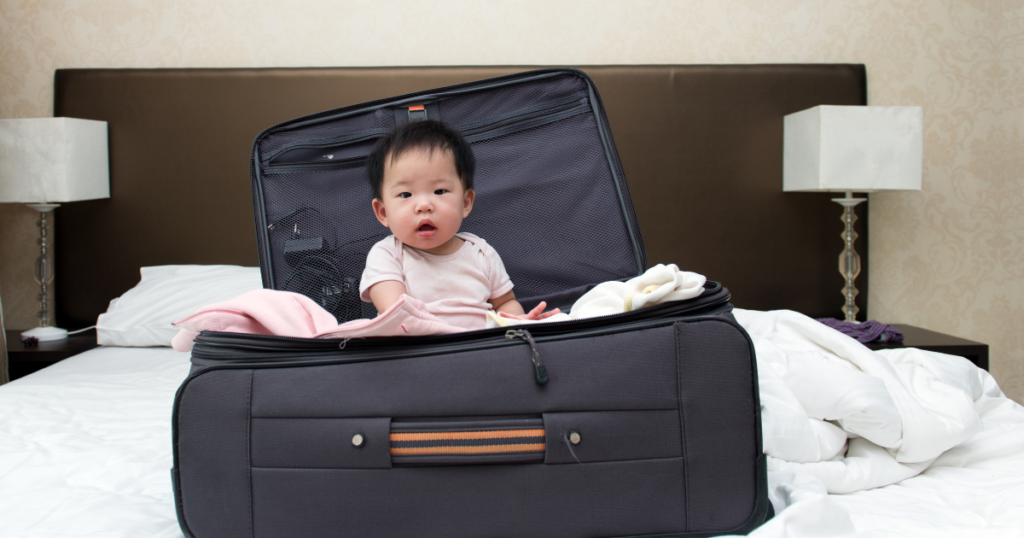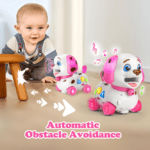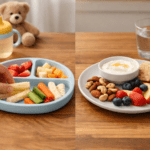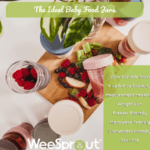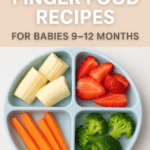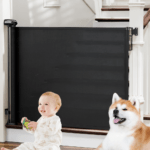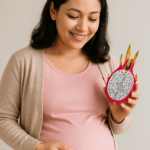Embark on worry-free journeys with your little one! Welcome to our comprehensive guide on seamlessly transporting cow milk for your baby while traveling.
Traveling with a baby can be a joy, but carrying essentials like cow milk poses unique challenges. This guide delves into the intricacies of proper milk storage, choosing suitable containers, and preparing for travel. Explore the benefits of insulated containers, portable bottle warmers, and creative solutions for on-the-go feeding. With practical advice, safety guidelines, and real-life parental experiences, you’ll be well-equipped to ensure your baby’s nutritional needs are met during any adventure. Say goodbye to travel stress and embrace confident parenting on the move!
Importance of Proper Milk Storage
Proper milk storage is paramount in safeguarding not only its freshness but also its essential nutritional value. Milk is a perishable product, and its composition is rich in vital nutrients sensitive to environmental factors. Temperature fluctuations and exposure to light and air can compromise milk quality, reducing its nutritional content.
Freshness is crucial for maintaining the taste and palatability of milk, especially for infants who may be more discerning about the flavors they encounter. Beyond taste, the nutritional value of milk, including proteins, vitamins, and minerals, can be significantly affected by improper storage conditions. The degradation of these nutrients may diminish milk’s overall health benefits, impacting the well-being of both infants and adults.
Proper milk storage involves keeping the milk at an optimal temperature, typically in a refrigerator or cooler, to slow down bacterial growth and maintain freshness. Protecting milk from light and air exposure further preserves its nutritional integrity. By understanding the significance of meticulous milk storage, individuals can ensure that every sip retains its nutritional potency, contributing to the well-rounded health and development of those who rely on this essential dietary staple.
How do you travel with cows’ milk for babies?

Traveling with cow’s milk for babies requires careful planning to ensure the milk remains safe and of high quality. Here’s a step-by-step guide:
- Choose the Right Container: Opt for a sturdy, spill-proof container made of food-grade materials. Ensure it is well-sealed to prevent leaks during travel.
- Prepare and Store Milk Properly: Express and store the milk in clean, sterilized containers. Keep it refrigerated until you’re ready to leave, then transfer it to a cooler with ice packs.
- Consider Insulated Containers: Invest in insulated containers to regulate temperature during travel. These containers help keep the milk cool or warm as needed, maintaining its freshness.
- Portable Bottle Warmers: Bring a portable bottle warmer if your baby prefers warm milk. This ensures you can warm the milk on the go, maintaining feeding routines.
- Pack Essentials: Alongside the milk, pack extra bottles, wipes, and a small cooler. Be prepared for unexpected delays or changes in your travel plans.
- Minimize Spill Risks: Tighten bottle lids securely, place bottles upright, and consider spill-proof containers to minimize the risk of spills during travel.
- Adhere to Milk Safety Guidelines: Follow hygiene practices like washing hands before handling bottles. Ensure all equipment is clean and sterilized to prevent contamination.
- Address Common Concerns: Understand the shelf life of expressed milk, guidelines for freezing, and whether your baby can drink cold milk. Address everyday worries to boost confidence.
- Get Creative: Explore creative solutions, such as using specialized milk storage bags or freezing a small portion of milk as an ice pack.
- Guidelines for Air Travel: If flying, check airline regulations, inform staff about your baby’s needs, and pack accordingly. Be aware of any restrictions on carrying liquids.
- Troubleshooting Tips: Have quick solutions ready for common issues like broken bottles, forgotten bottle warmers, or unexpected delays during travel.
Choosing the Right Container
Traveling with cow’s milk for babies requires careful planning to ensure the milk remains safe and of high quality. Here’s a step-by-step guide:
- Choose the Right Container: Opt for a sturdy, spill-proof container made of food-grade materials. Ensure it is well-sealed to prevent leaks during travel.
- Prepare and Store Milk Properly: Express and store the milk in clean, sterilized containers. Keep it refrigerated until you’re ready to leave, then transfer it to a cooler with ice packs.
- Consider Insulated Containers: Invest in insulated containers to regulate temperature during travel. These containers help keep the milk cool or warm as needed, maintaining its freshness.
- Portable Bottle Warmers: Bring a portable bottle warmer if your baby prefers warm milk. This ensures you can warm the milk on the go, maintaining feeding routines.
- Pack Essentials: Alongside the milk, pack extra bottles, wipes, and a small cooler. Be prepared for unexpected delays or changes in your travel plans.
- Minimize Spill Risks: Tighten bottle lids securely, place bottles upright, and consider spill-proof containers to minimize the risk of spills during travel.
- Adhere to Milk Safety Guidelines: Follow hygiene practices like washing hands before handling bottles. Ensure all equipment is clean and sterilized to prevent contamination.
- Address Common Concerns: Understand the shelf life of expressed milk, guidelines for freezing, and whether your baby can drink cold milk. Address everyday worries to boost confidence.
- Get Creative: Explore creative solutions, such as using specialized milk storage bags or freezing a small portion of milk as an ice pack.
- Guidelines for Air Travel: If flying, check airline regulations, inform staff about your baby’s needs, and pack accordingly. Be aware of any restrictions on carrying liquids.
- Troubleshooting Tips: Have quick solutions ready for common issues like broken bottles, forgotten bottle warmers, or unexpected delays during travel.
Read Also : Can you feed a baby in a car seat: Tips for On-the-Go Parents
How do you keep cows’ milk cold while traveling?
Ensuring your baby’s cow’s milk remains chilled and safe during travel is crucial for maintaining its freshness and nutritional value. Here are effective strategies to keep cow’s milk cold while on the go:
- Insulated Cooler Bags: Invest in a high-quality insulated cooler bag with sufficient space for milk bottles. Place ice or gel packs in the cooler to maintain a consistently cool temperature.
- Pre-Chilled Milk: Start with milk that is already chilled before the journey. This initial low temperature helps to counteract external heat, extending the time it stays cold.
- Use Insulated Containers: Transfer the cow’s milk into insulated containers to regulate temperature. These containers protect against external heat, preserving the milk’s coldness.
- Freeze a Small Portion: Freeze a small portion of the milk in a separate container to act as an internal ice pack. This helps maintain the temperature and provides an additional backup if needed.
- Wrap in a Cooler Bag: Even if you’re using an insulated container, placing it inside a cooler bag offers extra protection against temperature fluctuations. This is especially beneficial for longer journeys.
- Choose the Right Cooler: If you’re traveling for an extended period, consider a portable travel cooler with a power source. These coolers can be plugged into a car’s adapter or portable power bank, ensuring a continuous cooling effect.
- Avoid Direct Sunlight: Shield the milk from direct sunlight, as exposure to sunlight can raise the temperature inside the container. Place the milk in a shaded area within the cooler or bag.
- Refrigeration Pit Stops: Plan your journey to include stops where you can access refrigeration. Gas stations, rest areas, or cafes with refrigeration facilities provide opportunities to cool the milk if needed.
- Monitor Temperature: Keep an eye on the external temperature, especially if traveling in hot weather. Being mindful of the surroundings allows you to take proactive steps to maintain the milk’s coolness.
- Wrap Bottles in a Towel: Insulate milk bottles further by wrapping them in a towel. This simple trick helps to reduce the impact of external temperatures on the milk.
Tips on how to prepare and store milk before the journey

During your journey, proper preparation and storage of milk are vital to ensure its safety, freshness, and nutritional quality. Follow these tips for a hassle-free travel experience:
- Express Milk in Advance:
- Express an adequate amount of milk before your journey, allowing ample time for the process without rushing.
- Use Sterilized Containers:
- Choose clean, sterilized bottles or containers of safe materials, such as BPA-free plastics, glass, or stainless steel.
- Wash Hands Thoroughly:
- Wash your hands thoroughly before handling the milk and containers to maintain hygiene.
- Maintain a Cold Chain:
- Keep the expressed milk in the refrigerator until you’re ready to leave. This helps maintain its freshness and nutritional content.
- Pack in a Cooler with Ice Packs:
- Transfer the milk to a well-insulated cooler with ice packs just before leaving. This ensures a controlled temperature environment for the milk during the journey.
- Label and Date Bottles:
- Clearly label each bottle with the date of expression. This helps you prioritize the use of milk based on freshness.
- Avoid Overfilling Bottles:
- Leave some space at the top of the bottle to accommodate potential expansion during freezing. Overfilling may cause spills or leaks.
- Freeze Milk if Necessary:
- If your journey is lengthy, consider freezing a portion of the milk. Use specialized breast milk storage bags and lay them flat for efficient space utilization.
- Use Insulated Containers:
- Invest in insulated containers designed for storing breast milk. These containers help maintain a consistent temperature, especially in varying climates.
- Bring a Thermos or Flask:
- For warm milk preferences, bring a thermos or flask with hot water. This can be used to warm the milk during the journey.
- Pack Cleaning Supplies:
- Include wipes or a small cleaning kit for quick and efficient cleanups in case of spills or accidents.
- Plan for Feeding Times:
- Coordinate your travel schedule with your baby’s feeding times to ensure you’re adequately prepared.
- Check Transportation Guidelines:
- If flying, check the airline’s guidelines for carrying breast milk. Inform the staff in advance and be aware of any restrictions.
- Keep Milk Separate from Other Items:
- Store the milk in a dedicated section of your bag to prevent contamination from other items.
- Stay Organized:
- Maintain a checklist to ensure you’ve packed all the necessary items, and double-check before leaving to avoid last-minute stress.
Insulated Containers for Temperature Control
Investing in insulated containers revolutionizes the way we transport and maintain the temperature of liquids like breast milk. These specialized containers act as guardians of freshness, whether keeping milk cool or warm, offering a reliable solution during travels. With advanced insulation technology, they provide a stable environment, safeguarding the nutritional quality of the milk. Ideal for parents navigating diverse climates or extended journeys, these containers ensure that your baby’s milk is served at the right temperature, promoting convenience and peace of mind in the dynamic world of on-the-go parenting.
Portable Bottle Warmers
Portable bottle warmers emerge as indispensable tools for on-the-go parents, revolutionizing the feeding experience with unparalleled convenience. Designed for mobility, these compact devices eliminate the challenges of serving cold milk, providing a quick and efficient solution. Whether in the car, at the airport, or during outdoor excursions, portable bottle warmers offer a consistent temperature for milk, mimicking the comfort of home for infants.
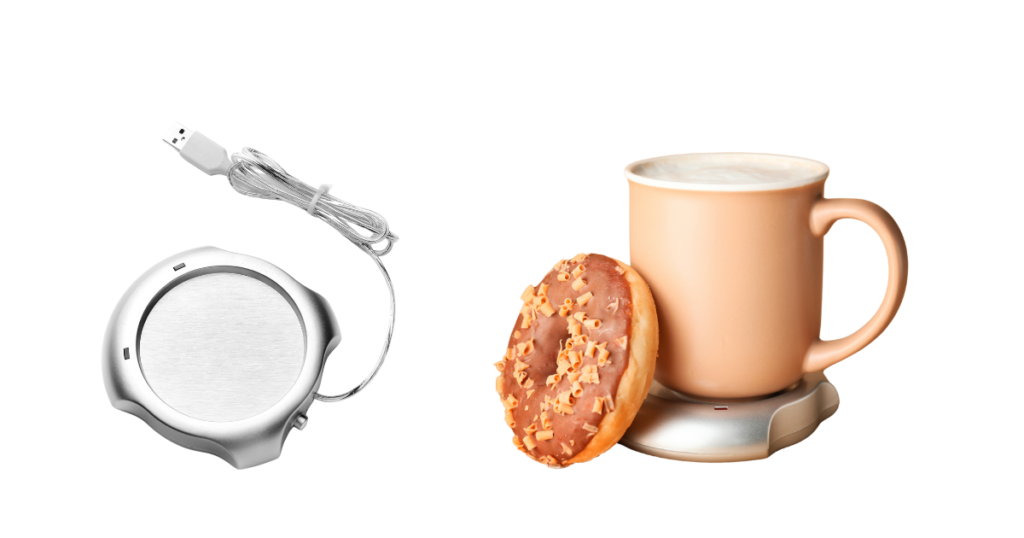
Their utility extends beyond temperature control, contributing to a seamless feeding routine. Portable warmers accommodate various bottle sizes, ensuring compatibility with your preferred feeding equipment. With user-friendly features like temperature presets and quick heating mechanisms, they empower parents with the flexibility to adapt to their baby’s feeding preferences swiftly.
In on-the-go parenting, where unpredictability reigns, portable bottle warmers become allies. They alleviate the stress of finding suitable facilities to warm milk, allowing parents to focus on nurturing their baby’s needs wherever they may be. This innovative solution provides practicality and enhances the overall travel experience, reinforcing the notion that parenting can be both convenient and fulfilling, even beyond the comfort of home.
Packing Essentials for Travel: Hassle-Free Milk Transportation
- Insulated Cooler with Ice Packs: Maintain the milk’s temperature during the journey with a reliable cooler equipped with ice packs.
- Clean, Sterilized Bottles: Pack enough bottles for the journey, thoroughly cleaning and sterilizing them to prevent contamination.
- Portable Bottle Warmer: A compact bottle warmer ensures you can provide the preferred temperature for your baby’s milk, even on the go.
- Extra Milk Storage Bags: Have additional storage bags to accommodate unexpected delays or changes in feeding plans.
- Wipes for Cleanups: Keep baby wipes handy for quick and efficient cleanups in case of spills or mess.
- Small Cooler for Backup Storage: A secondary cooler serves as a backup for storing extra milk or keeping bottles cool in case of any issues.
- Labels for Date Marking: Clearly label each Bottle with the date of expression to prioritize usage based on freshness.
- Formula Dispenser if Needed: If supplementing with formula, bring a dispenser for convenient and mess-free preparation.
- Feeding Bibs and Cloths: Stay prepared for potential spills by packing bibs and cloths for easy cleanup and to keep your baby comfortable.
- Waterproof Bags for Dirty Items: Include waterproof bags to separate soiled items, maintaining cleanliness and organization in your travel bag.
Dealing with Potential Spills: Travel Tips
Tighten Bottle Lids Securely: Ensure all bottle lids are securely tightened to prevent leaks and spills during travel.
Pack Bottles Upright: Store bottles upright to minimize the risk of spills, especially if using disposable bags.
Use Spill-Proof Containers: Opt for spill-proof containers designed for travel to further reduce the chance of accidental spills.
Avoid Overfilling Bottles: Leave some space at the top of the Bottle to accommodate potential expansion during freezing, preventing spills.
Have Cleanup Supplies Handy: Keep wipes, tissues, or a small cleaning kit readily available for quick and efficient cleanups.
Milk Safety Guidelines: Ensuring Consumption Safety
Wash Hands Before Handling Bottles: Maintain hygiene by washing your hands thoroughly before handling bottles and milk.
Use Sterilized Containers: Ensure all containers are properly sterilized to prevent bacterial contamination during storage.
Store in an Insulated Cooler: Maintain a consistent temperature for the milk by storing it in an insulated cooler during the journey.
Avoid Exposure to Direct Sunlight: Protect the milk from direct sunlight, as prolonged exposure can degrade its quality and nutritional content.
Follow Recommended Storage Times: Follow guidelines on how long expressed milk can be stored safely at various temperatures to ensure consumption safety.
Addressing Common Concerns: Easing Parental Worries
Shelf Life of Expressed Milk: Understand the duration for which expressed milk remains safe for consumption at room temperature, in the refrigerator, and when frozen.
Handling Frozen Milk: Learn the proper thawing techniques for frozen milk to retain its nutritional value.
Feeding Cold Milk to Babies: Assure parents that feeding babies cold milk is safe and can be a matter of personal preference.
Airline Regulations for Carrying Milk: Provide insights into airline regulations for carrying milk, including quantity limits and security procedures.
Managing Milk During Road Trips: Share tips for secure packing, using insulated containers, and having essential cleanup supplies for a smooth road trip experience.
Creative Solutions for Traveling with Milk
Specialized Milk Storage Bags: Explore the convenience of specialized milk storage bags that are compact and easy to use.
Utilize Insulated Lunch Bags: Repurpose insulated lunch bags to keep milk cool during short trips, offering a practical and budget-friendly solution.
Freeze a Small Portion as an Ice Pack: Freeze a small portion of milk to double as an ice pack, aiding in temperature control during travel.
Invest in Spill-Proof Containers: Opt for spill-proof containers with secure seals to prevent leaks and maintain cleanliness.
Choose Compact, Stackable Containers: Select compact and stackable containers to optimize space in your travel bag and ensure efficiency.
Guidelines for Air Travel: Flying with Milk Tips
- Check Airline Regulations Beforehand: Research and understand airline regulations regarding carrying liquids, including expressed milk, and comply with any specific requirements.
- Inform Airline Staff About Milk: Notify airline staff about carrying milk when checking in or passing through security for smooth and informed handling.
- Pack a Copy of Guidelines: Keep a copy of relevant guidelines in your travel bag for reference and to address any inquiries during security checks.
- Bring a Thermos for Warming: Consider carrying a thermos with hot water to facilitate on-the-go warming if necessary.
- Consider TSA Regulations for Liquids: Be aware of Transportation Security Administration (TSA) regulations regarding liquids and follow their guidelines for a hassle-free experience.
Troubleshooting Tips: Quick Fixes for Common Issues
- Broken Bottle Solutions: Offer quick fixes for a broken bottle, such as repackaging the milk or using a spare container.
- Forgotten Bottle Warmer Alternatives: Suggest alternatives for warming milk, such as using warm water from a café or requesting assistance from airport staff.
- Managing Unexpected Delays: Provide strategies for handling unexpected delays, including having extra supplies and adjusting feeding schedules.
- Dealing with Temperature Changes: Address concerns about temperature changes by emphasizing the insulation properties of storage solutions and recommending adjustments as needed.
- Emergency Cleanup Strategies: Share efficient cleanup strategies for spills, including using disposable wipes and having a designated cleanup area in your travel bag.
Conclusion
Preparing and thoughtful choices are critical in the realm of traveling with cow’s milk for babies. From selecting the proper containers to utilizing advanced tools like insulated containers and portable bottle warmers, on-the-go parents can navigate their journeys seamlessly. The significance of adequate milk storage and adherence to safety guidelines ensure that freshness and nutritional value are maintained. Realizing the experiences of fellow parents and creative solutions further enriches the travel process. As we conclude, remember that with careful planning, traveling with cow’s milk can be manageable and a positive and enriching part of the parenting adventure. Safe travels await!
FAQs
Can I carry expressed milk on a flight?
Yes, you can. However, familiarize yourself with airline regulations and inform the staff in advance.
How long can expressed milk be stored for travel?
Expressed milk can be stored for varying durations, whether at room temperature, refrigerated, or frozen. Check guidelines for specifics.
Do I need a bottle warmer for travel?
While not mandatory, a portable bottle warmer can be convenient for parents who prefer serving warm milk.
What do I do if my baby refuses to drink cold milk?
Consider using a portable bottle warmer or allowing the milk to reach room temperature before feeding.
Are there any specific guidelines for carrying milk during road trips?
Ensure secure packing, use insulated containers, and have essential cleanup supplies for a smooth road trip experience.
